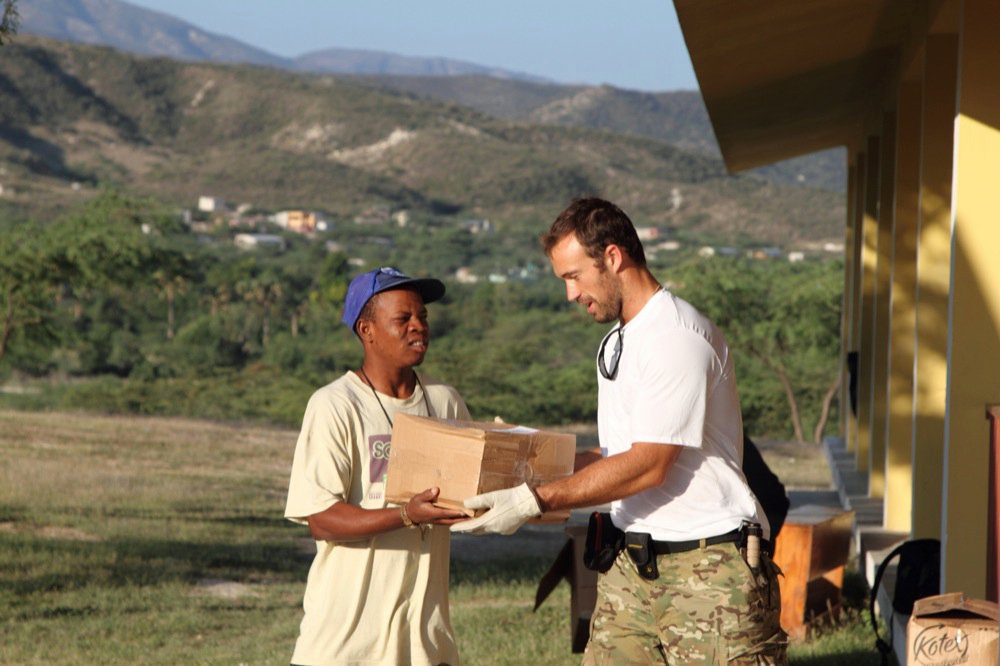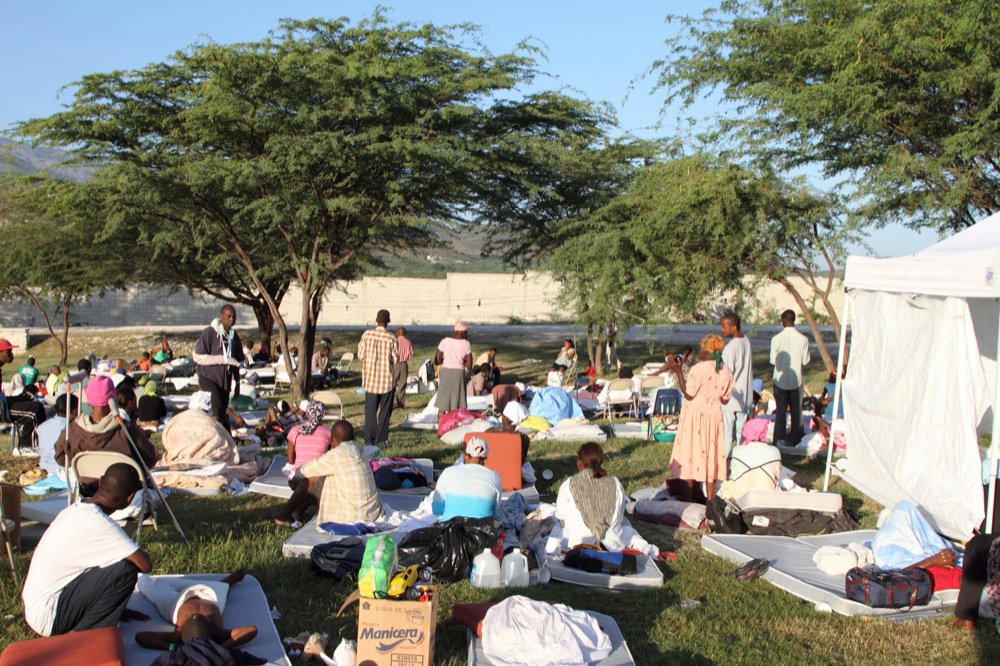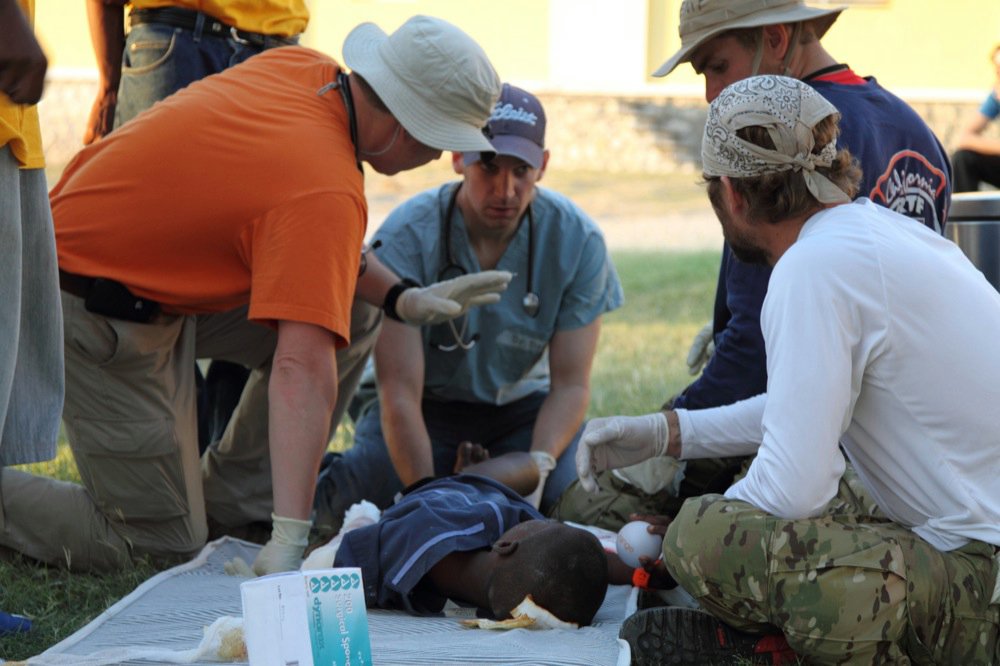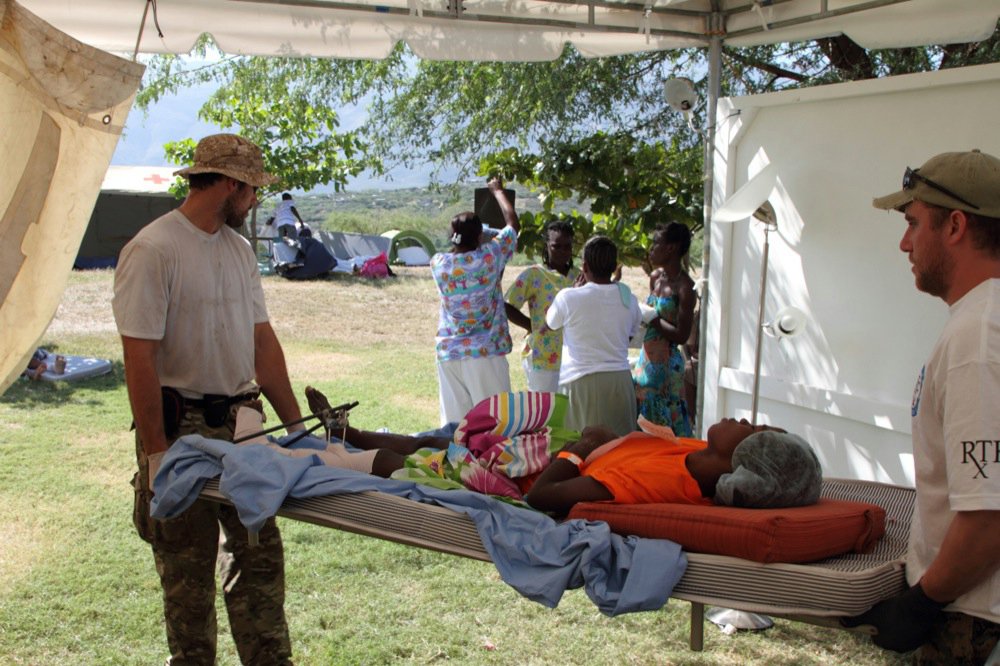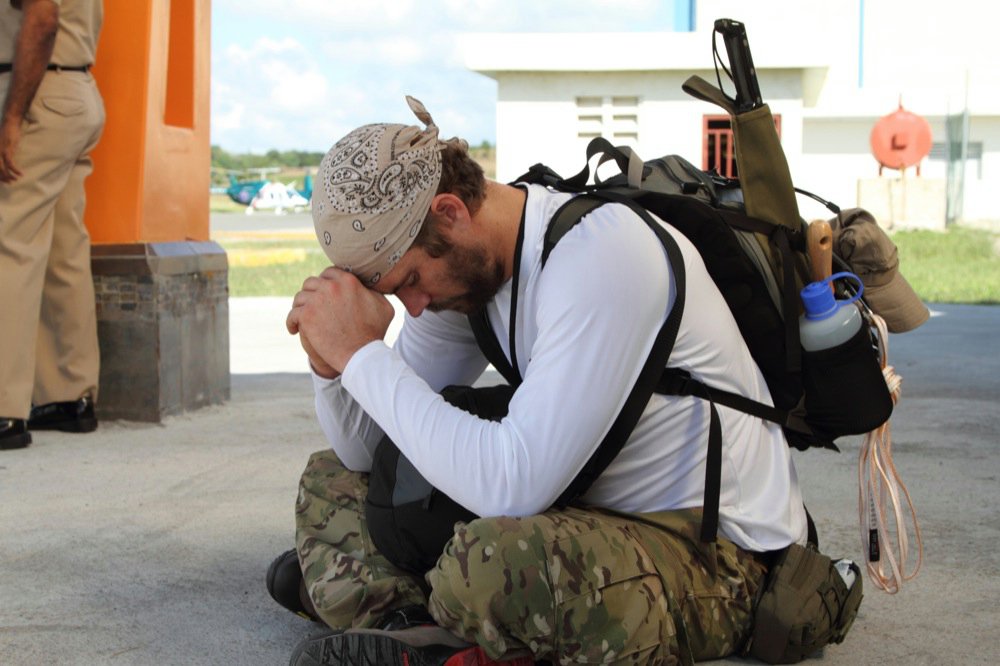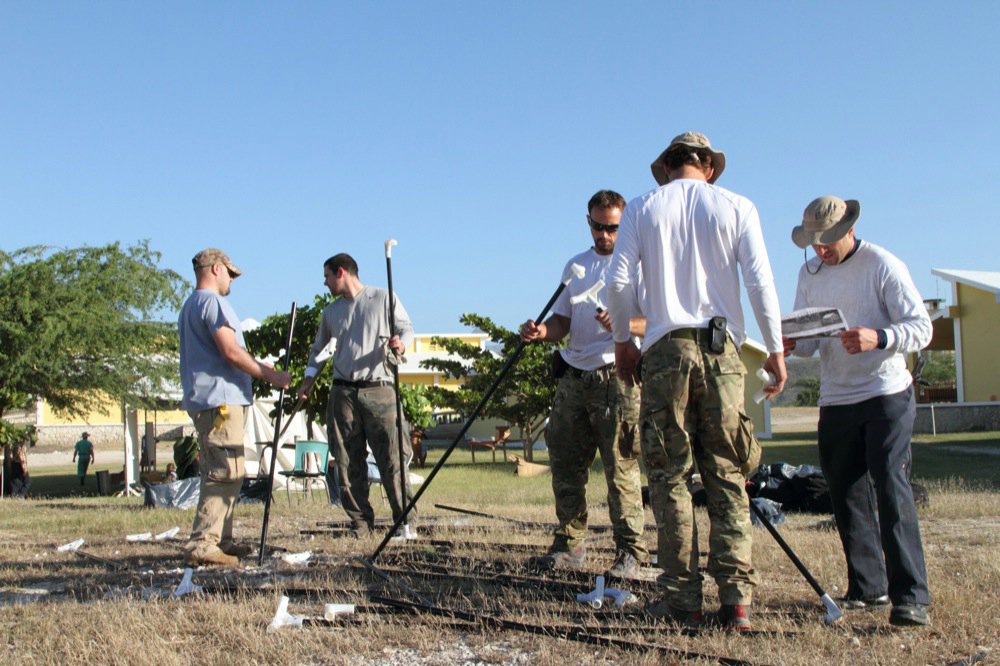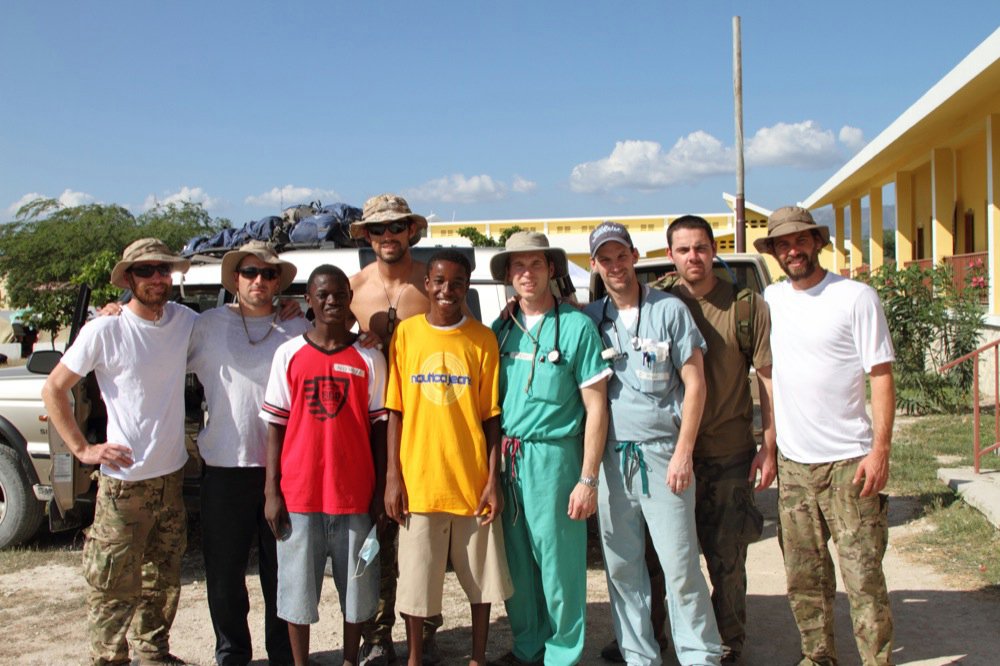
Haiti earthquake, January 2010
When the 7.0 magnitude earthquake hit just a few miles west of Haiti’s capital, Port-au-Prince, on January 12, REACH OUT WorldWide was born. After years of thinking about the idea, founding members Lucas Wimer, Paul Walker, Jesse Brisendine, Dave Marquez, Christian Urzua, John Cloughen and others were spurred to action.
Jesse’s story:
After spending a long weekend running from store to store, purchasing supplies including headlamps, camouflage pants, antiseptic wipes, water and canned food, we booked a flight to the Dominican Republic. Our plan was to arrive in the Dominican Republic, then cross the border into Haiti. Before we could do that, an even more daunting task awaited: packing.
We dumped all the supplies onto the floor of Lucas’s house and began dividing everything up. It looked like a Boy Scout’s Christmas fantasy come true. Odds and ends were strewn everywhere as we frantically tried to prepare for the unexpected scenarios we may encounter. We organized everything and headed out.
After a night of flying and hours of networking, we arrived in Haiti 5 days after the earthquake struck. A helicopter dropped us off at an orphanage 20 miles outside of Port-Au-Prince. Within 45 minutes of our arrival, we went to work and didn’t stop until we left a week later.
We assisted in patient treatment and transport, helped unload supplies and made convoys into Port-Au-Prince to collect more. We set up aid shelters and tents to help get the people out of the hot sun and give them some cover from the cool night air.
We quickly learned just how uncomfortable the Haitian climate was to camp in. Going to bed at night, we were in a full sweat, only to wake up in the wee hours of the morning shivering. Wallets were used for pillows and canned chili and Power Bars became a breakfast staple.
Each day, we worked vigorously while listening to the screams of patients who were being treated for wounds without pain medication. Blood was everywhere, but instead of it being a site to turn from, it became a motivator and a reminder that we had to get a job done to help the injured.
When we left Haiti we were treated to a six-hour car ride back to Santo Domingo, Dominican Republic. The ride was actually closer to ten hours, because we stopped for a few site-seeing detours, then we got lost. Back in Santo Domingo, we had some time to clean up before we departed; a shower never felt as good before as it did that day. We enjoyed a late dinner that evening, then boarded the flight for the long trip home.
The majority of the flight home was spent retelling stories from the past week. We talked about what we did and how we could do it better the next time. We discussed which supplies were most appropriate for the climate and what would be more effective in other climates. We talked about ways to make our unit more efficient and about the additional education and training needed to be better equipped for emergency situations.
Looking back, we all realized how life can change in an instant. For the Haitians, it went from an ordinary day to one of the biggest natural disasters on record. It’s easy to disassociate yourself with something so far away, when the truth is, it can happen anywhere. Seeing the images on the news and then physically being there, hearing the cries of patients, made it so real. These are normal people, no different from you and I. They are mothers, fathers, aunts, uncles and children. Focusing on the people made it easy to help.

